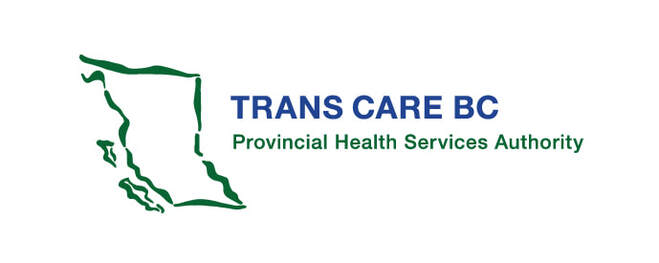Gender-affirming Hormone Therapy
Feminizing/masculinizing hormone therapy—the administration of exogenous endocrine agents to induce feminising or masculinizing changes—is a medically necessary intervention for many trans,intersex and gender diverse individuals with gender dysphoria (Newfield, Hart, Dibble, & Kohler, 2006; Pfäfflin & Junge,1998)
Criteria for Gender-affirming Hormone Therapy
Initiation of hormone therapy may be undertaken after a psychosocial assessment has been conducted and informed consent has been obtained by a qualified healthcare professional. A referral is required from the mental health professional who performed the assessment, unless the assessment was done by a hormone therapy provider who is also qualified in this area.
Criteria for gender affirming hormone therapy are as follows:
Persistent, well-documented gender dysphoria;
Capacity to make a fully informed decision and to consent for treatment;Age of majority in a given country
If significant medical or mental health concerns are present, they must be reasonably well-controlled.
In selected circumstances, it can be acceptable practice to provide hormones to patients who have not fulfilled these criteria. Examples include facilitating the provision of monitored therapy using hormones of known quality as an alternative to illicit or unsupervised hormone use or to patients
Referral for feminising/masculinizing hormone replacement therapy
People may approach a specialised provider in any discipline to pursue feminising/masculinizing hormone therapy. However, gender-affirming health care is an interdisciplinary field, and coordination of care and referral among a client’s overall care team is recommended.
Hormone therapy can be initiated with a referral from a qualified mental health professional.
Referral Letter
The recommended content of the referral letter is as follows:
-
The client’s general identifying characteristics;
-
Results of the client’s psychosocial assessment, including any diagnoses;
-
The duration of the referring health professional’s relationship with the client, including the type of evaluation and therapy or counselling to date;
-
An explanation that the criteria for hormone therapy have been met, and a brief description of the clinical rationale for supporting the client’s request for hormone therapy;
-
A statement that informed consent has been obtained from the patient;
-
A statement that the referring health professional is available for coordination of care and welcomes a phone call to establish this.
-
For providers working within a multidisciplinary specialty team, a letter may not be necessary;rather, the assessment and recommendation can be documented in the patient’s chart
Informed Consent
Feminizing/masculinizing hormone therapy may lead to irreversible physical changes. Thus,hormone therapy should be provided only to those who are legally able to provide informed consent.
Providers should document in the medical record that comprehensive information has been provided and understood about all relevant aspects of the hormone therapy, including both possible benefits and risks and the impact on reproductive capacity.
Physical Effects of Hormone Replacement Therapy
Feminizing/masculinizing hormone therapy will induce physical changes that are more congruent with a patient’s gender identity.
Transmasculine people
Some of the physical changes that may occur:
deepened voice,
clitoral enlargement,
growth in facial and body hair,
cessation of menses,
atrophy of breast tissue, and
decreased percentage of body fat compared to muscle mass.
Transfeminine people
Some of the physical changes that may occur:
breast growth (variable),
decreased erectile function,
decreased testicular size, and
increased percentage of body fat compared to muscle mass.
Most physical changes, whether feminizing or masculinizing, occur over the course of two years. The amount of physical change and the exact timeline of effects can be highly variable.
The degree and rate of physical effects depends in part on the dose, route of administration,and medications used, which are selected in accordance with a patient’s specific medical goals (e.g., changes in gender role expression, plans for sex reassignment) and medical risk profile.
Risks of Hormone Replacement Therapy
All medical interventions carry risks. The likelihood of a serious adverse event is dependent on numerous factors: the medication itself, dose, route of administration, and a patient’s clinical characteristics (age, comorbidities, family history, health habits). It is thus impossible to predict whether a given adverse effect will happen in an individual patient.
SOURCE
Standards of Care for the Health of Transsexual, Transgender, and Gender-Nonconforming People, Version 7 by The World Professional Association for Transgender Health (WPATH)
RESOURCES

Hormone Therapy Considerations
TRANS CARE BC

Hormone Readiness Assessment
TRANS CARE BC

Transgender Health: Injection Guide
FENWAY HEALTH

Hormone Injection Supplies Toolkit
TRANS CARE BC

Testosterone-Based Hormone Therapy
TRANS CARE BC

I am trans masculine and I think I want to start using testosterone! What should I know before I begin?
ASIA PACIFIC TRANSGENDER NETWORK (APTN)

Hormones: A Guide for FTMs
TRANSCEND TRANSGENDER SUPPORT & EDUCATION SOCIETY

Estrogen-Based Hormone Therapy
TRANS CARE BC

I am trans feminine and I think I want to start using hormones! What should I know before I begin?
ASIA PACIFIC TRANSGENDER NETWORK (APTN)
Source
Standards of Care for the Health of Transsexual, Transgender, and Gender-Nonconforming People, Version 7 by The World Professional Association for Transgender Health (WPATH)
Videos
Introduction to Testosterone- based hormone therapy
Introduction to Estrogen-based hormone therapy
Gender-affirming hormone therapy | UCLA Health
Feminizing hormone therapy at Seattle Children’s
Gender-affirming hormone therapy - Dr. Malika Rawal
Masculinizing hormone therapy at Seattle Children’s
Disclaimer: Please note no copyright infringement is intended and as EATHAN we do not own nor claim to own the videos used here.
Please Remember:
For many transgender individuals accessing gender-affirming hormone therapy (GAHT) is an important and medically necessary step in their gender transition. Both feminizing and masculinizing regimens are safe when used within established hormone protocols and are associated with significant improvements in mental health outcomes, including reduction in depression, anxiety and gender dysphoria.
